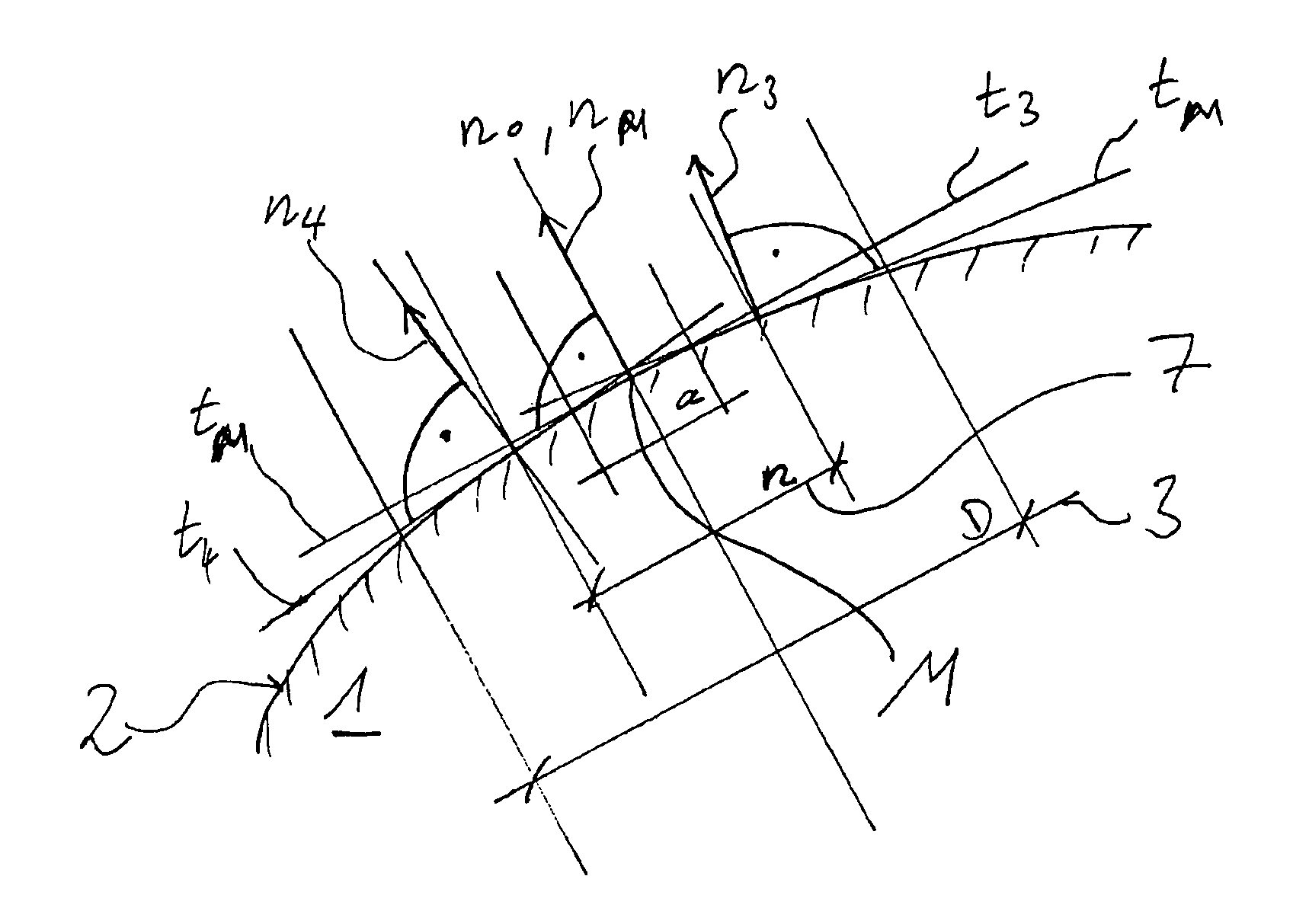Method of processing a digitized workpiece, particularly a three-dimensional model of a dental prosthetic item to be produced therefrom, and apparatus therefor
a three-dimensional model and workpiece technology, applied in the field of three-dimensional models of dental prosthetic items, can solve the problems of only insufficient and indirect influence of the surface between the lines or points by users, and achieve the effect of enlarge or diminishing the action zon
- Summary
- Abstract
- Description
- Claims
- Application Information
AI Technical Summary
Benefits of technology
Problems solved by technology
Method used
Image
Examples
Embodiment Construction
[0040]FIG. 1 shows a digitized workpiece in the form of a three-dimensional model of a dental prosthetic item for production therefrom, which is to be altered by the user. The model is shown on the monitor of a computer.
[0041]During processing, the surface 2 of the model of the dental prosthetic item, present in the form of digital data, will be processed by a tool which influences the design, ie, influences these data. The tool acts on a local zone of action 3 on the surface 2. The zone of action 3 is shown as a circle, but can have other suitable shapes.
[0042]Input means, not shown in the figure, are provided for moving the zone of action 3 of the tool over surface 2. Examples thereof are a computer mouse or a digital pen plotter which controls a cursor 11 or 12. The tool is initially free to move over the surface of the representation and can be activated as needed. This happens for example by a mouse-click at a particular place or by clicking and holding a mouse button while at ...
PUM
 Login to View More
Login to View More Abstract
Description
Claims
Application Information
 Login to View More
Login to View More - R&D
- Intellectual Property
- Life Sciences
- Materials
- Tech Scout
- Unparalleled Data Quality
- Higher Quality Content
- 60% Fewer Hallucinations
Browse by: Latest US Patents, China's latest patents, Technical Efficacy Thesaurus, Application Domain, Technology Topic, Popular Technical Reports.
© 2025 PatSnap. All rights reserved.Legal|Privacy policy|Modern Slavery Act Transparency Statement|Sitemap|About US| Contact US: help@patsnap.com



